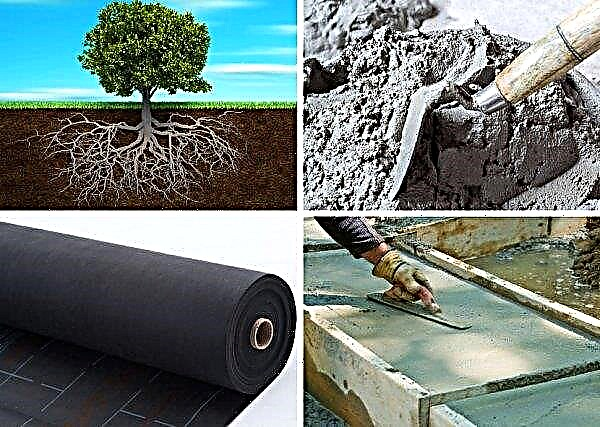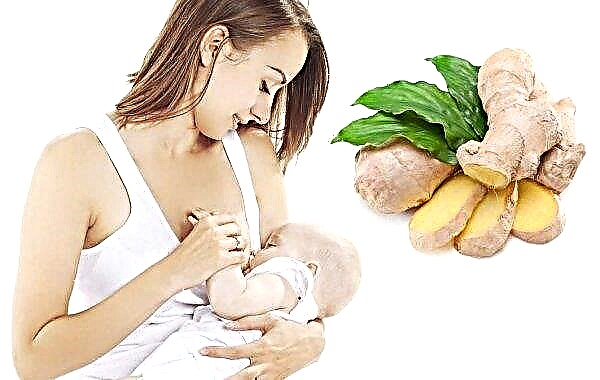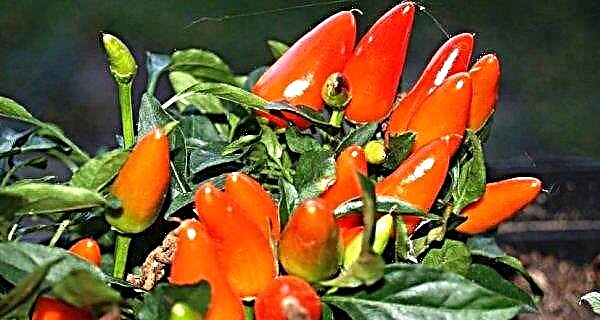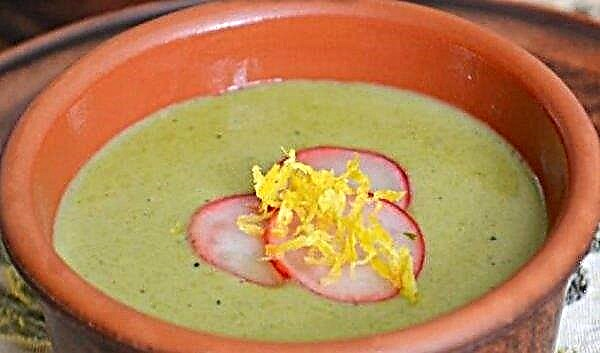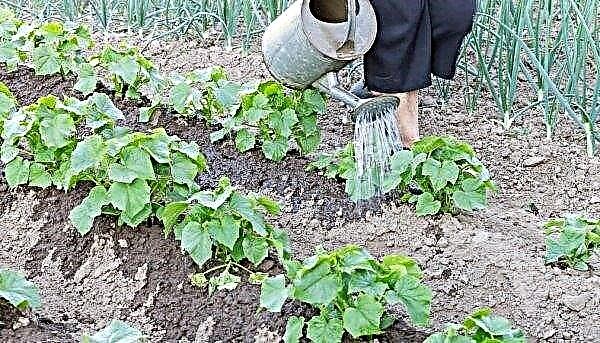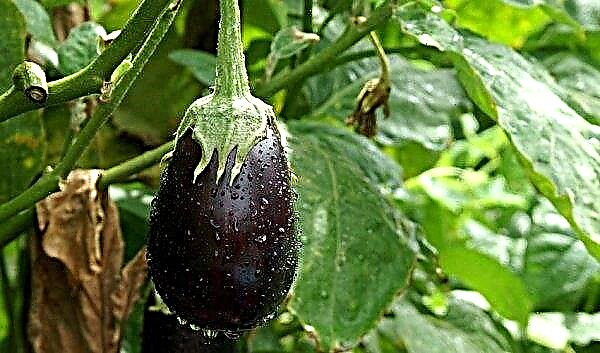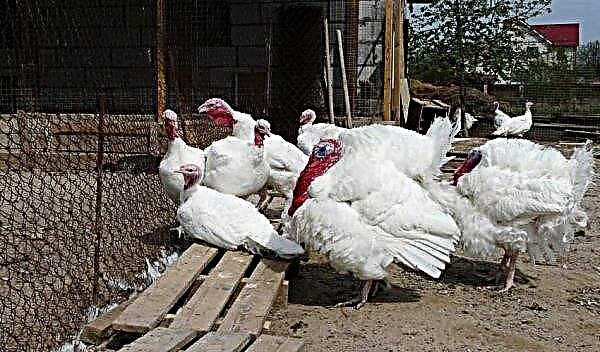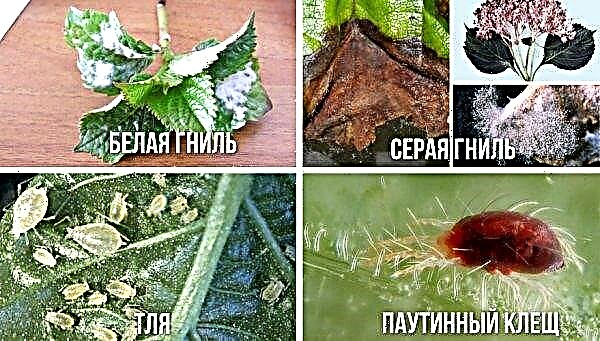Creating an open or closed veranda implies that you can enjoy all the amenities, as well as indoors, but at the same time be outdoors. Such extensions are of several types and are called differently - a veranda, a patio, a terrace, a loggia. But the principles of laying the floor and the materials used for them will be the same. Read more about what to make a floor on the veranda of a private house, read in the material below.
Floor requirements
First of all, pay attention to the small difference in the architectural understanding of the different names of the terraced extension to the country house:
- Veranda - It is a porch with a roof, usually partially fenced with pillars or railings. She can be on the street in front of the house or encircle it.
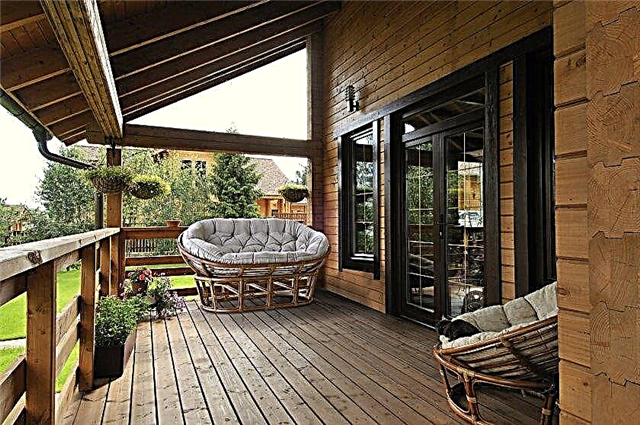
- Covered patio - This is a paved relaxation area, leaving the house through French or double doors and located on the side of the building. The patio is usually covered with a roof that merges with the main structure.

- Covered patio - An excellent architectural solution for a semi-open recreation area, which allows you to protect outdoor furniture from exposure to rain and snow.

- Loggias, based on Italian architecture, are corridors or galleries that run along the house and are supported by columns or beams.

Whatever you call a small extension to a private cottage, it is created with the same type of foundation as the whole building. For this reason, it is necessary to cover waterproofing in it in order to create a barrier between soil moisture and the room. And for the veranda, which will be used in the winter, you will need floor insulation. It will prevent the outflow of heat from the room to the ground.
Important! It is not recommended to use fabrics and carpets to cover the floor. Every hour, human skin loses 1.5 million flakes of various sizes: most of them fall to the floor, and in a year the carpet manages to collect about 1 kg of dirt.
Also, the floor in the annexes should be considered taking into account the following points:
- Most often, this is the first room through which visitors pass, which means that the coating in it will be subject to more pollution than in other parts of the house. Accordingly, it should be easy to wash.
- The floor must not absorb dirt or deform from moisture.
- The coating must be resistant to mechanical abrasion.
- Resistance to temperature changes in summer and winter is required from the floor.
- If the floor is attractive, the person entering the room creates a pleasant mood.
On the veranda
Due to the fact that the inner space is supposed to be used in any weather and at any time of the year, then it:
- walls should be closed and insulated;
- windows are glazed;
- the floor is insulated.
 Glazing can be either permanent or temporary, designed in the form of blinds or an opening screen. But the floor is immediately made stationary and insulated. It is created using the same technologies as the main flooring in the house.
Glazing can be either permanent or temporary, designed in the form of blinds or an opening screen. But the floor is immediately made stationary and insulated. It is created using the same technologies as the main flooring in the house.
On the outdoor terrace
If the veranda does not have a deep concrete foundation, then the floor must withstand temperature fluctuations, since it is in direct contact with the external environment. For this reason, it must be done with heat and vapor barrier, which will protect it at extreme temperatures and humidity.
The choice of material for the floor
The flooring should be designed in several layers. An asphalt or concrete base separates the soil from the floor beams, which will act as a supporting support along with a wooden floor. They will distribute the load directly to the foundation of the building.
Between the beams and the wooden floor there should be insulation, which will prevent the outflow of heat and moisture in the room. The insulating layer must be resistant to damage by rodents, insects and moisture.

As for the flooring, it can be made of different materials:
- wooden boards, OSB boards, plywood;
- tile, ceramic or other decorative plates;
- linoleum or vinyl;
- natural stone;
- rubber;
- other materials.
Material for the top floor must be carefully selected. Due to intense wear, it will deteriorate and should be easy to replace. In addition, it is desirable that the coating has soundproofing properties.
Did you know? Mother of pearl, diamonds and black onyx are embedded in the most expensive tiles in the world. It costs about $ 1,000,000 per m.².
Wood
When deciding that the floor will be wooden, it is worth looking at modern options for this design. You can purchase a floor edged board made of hard or hardwood, laminate, bamboo, cork.
Laminate is made by compressing several layers:
- stabilizing, which consists of resins and cellulose;
- the carrier is fiberboard boards;
- decorative - it is formed by applying a protective film coating on top of the remaining layers, which will mimic the structure of wood, stone or other material.

There are several classes of laminate in the distribution network - from 21 to 34. They differ in the load that they can withstand. The 31st is used in rooms with a small load, and the 34th is used in restaurants, sports clubs, that is, where a large flow of people passes during the day.
- Among the advantages of this material:
- ease of installation;
- lack of need for floor treatment after it is bedded;
- simplicity in leaving;
- incombustibility;
- abrasion resistance.
Laminate It is a cost-effective coating that withstands wear and tear. For ease of installation, its sides are processed in such a way as to form a lock due to the entry of the protrusion on one board into the groove of the other. When buying, be sure to pay attention to wear resistance, seller’s warranty and resistance to moisture.
Important! The areas where the boards connect are worn down over time, and the coating may need complex repairs.
Floorboards are considered in two versions:
- classic
- massive, which is the final product for cladding, like laminate.
Solid wood flooring - a classic. It has excellent appearance and durability. Modern boards are equipped, like a laminate, with a spike-groove lock.
Typical product sizes:
| width | 90-100 mm |
| length | 300–1600 mm |
| thickness | 18-22 mm |
Please note that the edged board does not have a “tongue-and-groove” lock, and it will have to be processed after installation: sanded, treated with stain, varnished or painted to protect it from contact with moisture. Depending on the type of wood, some boards will be more resistant to wear.

So, the harder the wood, the less it will be damaged by scratches. Deciduous wood tends to swell from moisture, so they are not recommended for use in the veranda. Prices for the board will vary depending on the type of wood.
Check out

- Advantages of a wooden board:
- environmental friendliness;
- durability - up to 50 years.
- Disadvantages:
- exposed to moisture;
- afraid of temperature changes;
- deforms and shrinks with time;
- may be damaged by parasites.
Engineering board - This is a two- or three-layer product in which the layers are glued together. Plywood is contained inside, and the surface is covered with veneer made of precious wood. In its properties, it is similar to parquet, but, in contrast to it, has a higher wear resistance.
 And it has a significant minus - the board can not be used in the open veranda due to the fact that the stabilizing layer actively absorbs moisture and will be deformed.
And it has a significant minus - the board can not be used in the open veranda due to the fact that the stabilizing layer actively absorbs moisture and will be deformed.
Terrace board (decking) is specially designed for use in outdoor areas. It is made of wood-polymer composite (WPC).
- It has:
- strength;
- durability;
- resistance to moisture, ultraviolet, fungi;
- good external data.
The difference between this type of coating from other types is that its surface is equipped with grooves, along which moisture can drain from the floor during rain. If you use it outdoors, you will need regular care so that the coating remains beautiful. You also need to sweep away the dust from it and wash it periodically.

PVC, or vinyl tile - This is an artificial floor covering made of polyvinyl chloride (PVC). Made in the form of strips up to 1 m long and up to 18 cm wide.
The tile also consists of several layers, like a laminate:
- base;
- balance sheet;
- main;
- decorative;
- protective (from a film with UV protection).
Did you know? Wooden floors were first used in 1683 at the Palace of Versailles. Only the richest people could afford their installation, because the floors were made by hand and were very expensive.
This is a universal material for any type of room, including a veranda, a bathroom, a bathroom, that is, places that are constantly in contact with moisture. He has many advantages.
- Among them:
- inertness to moisture;
- resistance to dirt;
- not exposed to fungi, mold, rodents, insects;
- high wear resistance;
- the ability to use on any type of floor;
- variety of shades.

Cork floors - This is one of the most expensive coating options. It is created from the bark of a balsa wood bonded with resins. Used to cover floors, walls and any other surfaces. It can be sold in rolls or as tile materials.
- In addition to the cost, it should be noted that such a floor:
- it is quickly worn out;
- stains are difficult to remove from it;
- susceptible to temperature changes and will swell from humidity;
- not resistant to mechanical damage.
 Among its advantages - good sound insulation and thermal conductivity.
Among its advantages - good sound insulation and thermal conductivity.
Bamboo floor very common in China. These are plates made from bamboo stalks. Unlike wood, they are resistant to moisture. Bamboo flooring is softer than traditional hardwoods and has soundproofing properties.
Tile
Tiles are available in various sizes, shapes, colors and materials. It provides an attractive appearance to the coating over long periods of time. This type of decoration material comes from the time of ancient Egypt.
There are such tiles:
- clinker;
- rubber;
- ceramic;
- porcelain stoneware;
- terracotta.
 The most common are ceramic and porcelain tiles.
The most common are ceramic and porcelain tiles.
They differ in the degree of water absorption. Ceramic is best suited for rooms with high humidity, and porcelain stoneware is suitable for outdoor use. The material is fired at high temperature, from which it becomes resistant to any external influences.
Did you know? Roman builders mixed lime, water and volcanic ash from Mount Vesuvius and called their concrete “pozzolana”. It existed in 4 species — red, gray, white and black.
- Among the advantages of tiles:
- minimal abrasion;
- high temperature resistance;
- strength;
- moisture resistance.
 Clinker tiles are also called paving stones. It is used for terraces and garden paths. It is also resistant to adverse factors. Place it on a concrete screed.
Clinker tiles are also called paving stones. It is used for terraces and garden paths. It is also resistant to adverse factors. Place it on a concrete screed.
Concrete
A modern concrete floor is not only a classic gray color, but also the ability to cover it with paint or varnish, which are designed for such work. The coating will remain equally wear-resistant, but will be brighter. You can also add marble chips to it to get a more decorative look.
Some sources suggest performing such work as polishing concrete to give it a decorative effect. Spend it with special equipment using abrasives. The result is a concrete surface of the desired degree of gloss and smoothness.

You can polish concrete with wet or dry methods. Each of them has its own advantages. But dry polishing is used much more often because of speed and convenience. In wet polishing, water is used to cool diamond abrasives and reduce grinding dust.
Bulk floor
Polymer floor coverings have become the most reliable and time-tested, designed to protect the floor in the open air or where there is heavy traffic. Several types of such coating are made.
They differ from each other in composition and protective properties. A similar coating is applied over the base layer, for example concrete. The composition of the solution is a resinous binder and filler. They are connected and applied to the surface with a spatula.

For a gazebo or veranda may be suitable:
- Polymer cement. It provides excellent resistance - thermal, moisture and chemical. But such a coating is not decorative enough.
- Polymer flooring. It can be represented by epoxies and Polyaspartic resins. An epoxy-based mixture is a flexible coating that is mixed with pigment and applied to concrete. And the second option is used where there are problems with humidity. This type of coating is characterized by wear resistance, resistance to mechanical stress and exposure to aggressive chemical compounds.
Linoleum coating
Linoleum is a sheet floor covering. It was patented back in 1863 and has since undergone a number of changes. The attractiveness of this material lies in its water resistance, tear resistance and mechanical damage. It comes in the form of glued sheets and tiles.

Made from natural renewable materials, including:
- linseed oil;
- cork powder (which gives the material elasticity);
- pine resins;
- wood flour.
In some types of linoleum, limestone dust is present for hardness and durability. Pigment paints give it color and create patterns. Some manufacturers apply a layer of protective coating on it, which helps protect the floor from scratches and exposure to sunlight.
Important! When working on laying flooring, be sure to use gloves, as some solutions, including concrete, can cause irritation of the skin.
Without such a coating, the floor should be cleaned and waxed every two or three years to maintain shine. Linoleum sheets are often confused with vinyl flooring. However, it is much tougher than vinyl, which makes installation difficult and makes vinyl coatings more attractive.
- The benefits of linoleum:
- longevity, with a guarantee of up to 25 years. With proper care, it can last 40 years or more;
- It is made from renewable materials, biodegradable and does not pollute the environment;
- does not emit harmful fumes;
- retains an attractive appearance, because the pigments are located throughout the thickness of the material, and not just on the surface, as in vinyl and laminate coatings. This helps hide scratches and dents;
- does not require special care, only periodic sweeping and wet cleaning.
- Disadvantages:
- can be spoiled by high heels and furniture legs. Sharp objects leave cuts on it;
- may become darker or yellowish when exposed to sunlight;
- susceptible to moisture (condensation) under the coating. Not recommended for installation in rooms with high humidity and in the open air;
- it is slippery after rain.
Ceramics
Ceramic tile can be used to finish the floor in the gazebo or on the veranda. It is made from burnt clay.It looks like granite, and therefore some companies use these terms interchangeably, but in reality they are different.
 Ceramic tile is not so dense and has a higher absorption rate, which means that it is not protected from freezing and is damaged more easily than granite. Despite this, this tile is a very popular type of coating for floors, countertops and walls.
Ceramic tile is not so dense and has a higher absorption rate, which means that it is not protected from freezing and is damaged more easily than granite. Despite this, this tile is a very popular type of coating for floors, countertops and walls.
It is covered with a special coating that protects and seals it, which protects the surface from absorption of various substances and increases the durability of the coating. Glaze also gives the surface a shade or pattern.
Porcelain Tiles - This is a type of tile, which is characterized by greater strength, hardness, water resistance than conventional ceramics. This effect is achieved by burning clay with additional substances that give it hardness.

- Advantages of porcelain stoneware:
- It can very convincingly imitate all kinds of traditional floor coverings, such as marble, granite, wood or even steel, bamboo or cork.
- Durability. It is resistant to most shock loads.
- Resistance to liquids due to high strength. Accordingly, it is resistant to stains.
- Fire resistance. It does not burn under any normal conditions.
- Maintainability. If a piece of tile breaks off, then it is easy to remove and replace it.
The disadvantages of porcelain stoneware are the same as that of ordinary tiles. Among them are heavy weight and high price. It is also important that there is no unified marking on porcelain stoneware, and this can complicate the purchase.
Natural stone
The term "natural stone" refers to a number of minerals of mountain origin. Materials for floors from it - slate, marble, limestone, travertine, granite and sandstone, each of which has different properties. When buying stone tiles, it is important to consider these properties.

The parameters by which you need to evaluate the material:
- Takeover rating. The more absorbent, the more susceptible to staining the stone will be. Accordingly, such material is susceptible to cracking when frost occurs. Granite is most resistant to moisture, but sandstone is the least.
- Grade. The first is high-quality homogeneous materials. The second consists of tiled materials with minor defects, such as chips, scratches or uneven surfaces. The third has serious flaws in the size and shape of the surface.
- Coefficient of friction - Shows how slippery the tile will be. The higher this ratio, the greater the grip. For the veranda, the minimum value of this indicator is 0.6.
Natural stone flooring is great for outdoor use. They look good and are extremely durable.
Important! It must be remembered that, with the exception of granite, the remaining stones are porous and in one way or another require periodic treatment with a sealant to maintain their appearance.
Rubber flooring
Rubber floors can be made from natural rubber wood or from synthetic materials recycled from car tires. They are presented in a variety of options from different manufacturers. There is tile and sheet material of different sizes and colors.
 Rubber is extremely resistant to slipping, so it is ideal for gyms, as well as for creating external floor coverings.
Rubber is extremely resistant to slipping, so it is ideal for gyms, as well as for creating external floor coverings.
- Advantages of the rubber floor:
- durability;
- resistance to any slippage;
- water resistance.
DIY installation rules for flooring
Before laying the floor on the veranda, you need to take care of waterproofing. Her task is to let moisture out and not allow it to penetrate back. The floor should be laid on top. They are different, so the rules for their installation will also be different.
Did you know? The word "porch" comes from India and means "a place that leads out."
However, there are a number of common points:
- Check the leveling of the subfloor and repair cracks or bumps.
- Before starting work, carefully read the installation instructions. It should be on the packaging for the purchased material.
- Remember that certain types of coatings have the property of shrinking and expanding, which means that they should not be mounted close to the wall.
- The surface on which the coating is laid must be cleaned with a washing solution and allowed to dry well.
- If the use of the material involves applying to the surface of the primer or additional solution, then this step must be performed. The function of such solutions is surface sealing.
- Lay the coating in accordance with the instructions and accurately maintain the time allotted for the drying of the layers.
Features of finishing the floor of the veranda and terrace
When choosing a floor covering for a veranda, a number of factors should be considered. It must be strong enough to withstand the harsh climate outside. In summer, the sun's ultraviolet rays fall on the floor of the veranda all day, and the winter months bring frost with snow and ice.
The coating requires resistance to all these weather manifestations. The floor should be easily cleaned from any external influences. For film or tile coatings, it is sufficient to simply sweep and wash them periodically.
Did you know? As an element of the architectural style, the veranda began to spread in the 1850s in colonial buildings. The term meant a long covered gallery that ran along one of the walls of a residential building, included a porch and was intended to receive visitors in the fresh air.
How to cover a wooden floor
If a wooden floor is already laid in the gazebo or on the terrace, then to protect it from the weather you need to cover it with paint or varnish. Please note that the range of modern paints is quite wide. So, for example, epoxy is made on the basis of resin. After application, it does not dry, but polymerizes, that is, hardens. The coating turns into a film that seals the source material.
In order to prevent stains from appearing through the coating, the floor is first cleaned and the stains removed with acids. Then on a cleaned, washed and dried surface, paint is applied in 2 layers. The drying time of each is 12-24 hours. The result is a coating that is resistant to abrasion and moisture.

Rubber or rubber paint also forms a protection. Layer thickness - 20 mm. The resulting floor is durable, resistant to any influences and very aesthetic. In addition, rubber paint provides isolation from noise and can last up to 10 years.
Pay attention to when you can’t work with paints:
- at temperatures below + 5 ° C, above + 35 ° C and relative humidity above 70%;
- if there was a frost within 2 days before the work or it is expected within the next 2 days.
Varnish is applied according to the same rules as paint. But there is a difference - because of transparency, you can not apply it on an unpurified or deformed surface: it will show all its flaws.
Whichever coating option you choose, remember that at the same time you need to purchase all related materials: adhesive solutions, primers, etc. Be sure to follow the instructions for the material provided by the manufacturer. Even similar materials, but produced by different companies, may have differences in drying time and in application features.






